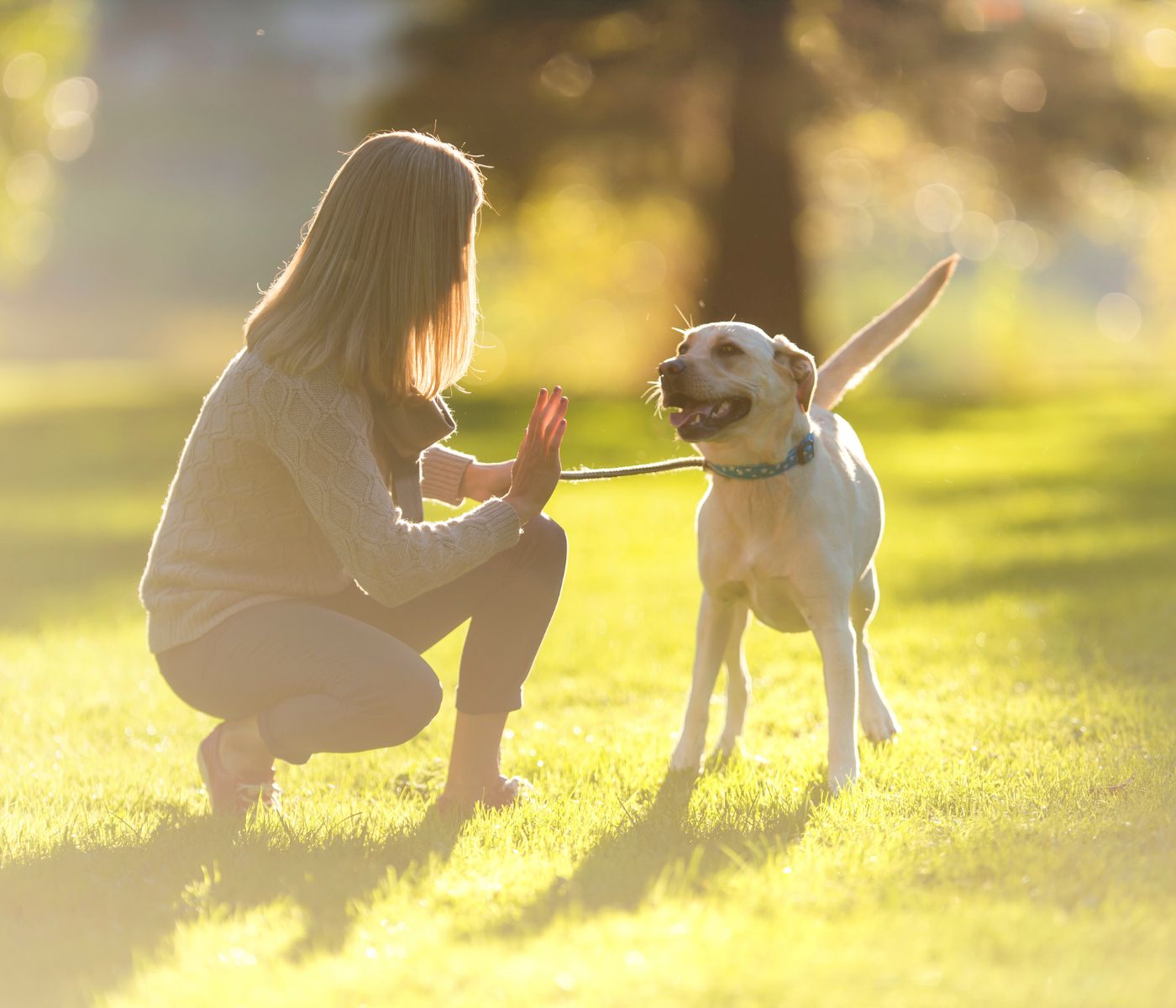If you’re a new dog owner, you may wonder what to expect when your female dog comes into heat. The good news is that you can make this period much more bearable for you and your dog with some effort.
Here are a few things to remember: Your dog will probably be in heat for about three weeks.
- During this time, she will be more interested in other dogs and may try to escape to find a mate.
- During walks, keep her on a leash and close to you. Keep an eye on her when she’s in the yard. It’s also a good idea to keep her away from male dogs as much as possible.
- Your dog may also be more aggressive during this time. She may snap at other dogs or people, so be prepared to intervene if necessary. If you have other pets, keeping them away from your dog during this time is best.
- Finally, your dog will probably be less interested in food and play during this time. She may not be as active as usual, and her appetite may decrease. Don’t worry; this is normal behavior for dogs in heat.
This blog post will go through the many stages of a dog’s heat cycle and some ideas for keeping your beloved buddy calm during this time.
The Different Stages of a Dog’s Heat Cycle

Proestrus
The dog heat cycle’s first stage is proestrus, typically lasting for 9-13 days.
During this time, the female’s body is preparing for ovulation. The ovaries begin to grow follicles, which contain the eggs that will be released during ovulation.
The vulva also begins to swell and redden as blood flow to the area increases. You may notice your dog licking her vulva more frequently during this stage.
Estrus
Estrus is the 2nd stage of the heat cycle, and it is when ovulation occurs. This stage usually lasts for 9-12 days. During estrus, the follicles on the ovaries rupture and release eggs into the fallopian tubes.
The eggs then travel down the tubes and into the uterus, where they implant themselves in the lining. At this point, your dog is fertile and can become pregnant if she mates with a male dog.
You may notice that your dog’s behavior changes during estrus. She may be more clingy than usual or seem anxious or restless. She may also urinate more frequently as she marks her territory with her scent.
Some dogs will also experience a change in appetite during this time as their hormones fluctuate.
Diestrus
Diestrus is the 3rd stage of the heat cycle, lasting 60-90 days. This is the period when your dog is pregnant if she mates during estrus.
Without mating, her body will absorb the eggs produced at ovulation, preventing conception.
During Diestrus, you may notice that your dog’s nipples enlarge and darken as her milk glands prepare for lactation (milk production). Her abdomen will also swell as her puppies grow inside her womb.
The fourth and final stage, anestrus, will begin following diestrus if your dog does not become pregnant at this time.
Anestrus
Anestrus is the 4th and final stage of the heat cycle. It is the resting phase when the female’s body prepares for the next heat cycle.
Anestrus typically lasts 3-6 months, although it can sometimes last up to a year.
During this time, the female’s reproductive organs will shrink to their standard size, and her hormone levels will return to normal.
Signs that your Dog is in Heat

Bleeding
Bleeding is one of the most visible signs that your dog is in heat. It usually occurs around day 10 of her cycle and can last anywhere from 9 to 18 days.
The blood flow can vary significantly from dog to dog, with some barely noticeably spotting while others have a heavy flow.
If unsure whether your dog is bleeding, keep a close eye out for any discharge or stains on her fur.
Swollen Vulva
A swelling vulva is another indication that your dog is in heat. It usually occurs during the later stages of your dog’s cycle and can last up to 3 weeks.
The vulva will appear enlarged and may be redder than usual. You may also notice your dog licking her vulva more frequently than usual.
Behavior Changes
During their heat cycles, many dogs experience behavior changes such as increased restlessness, whining, and panting.
They may also become more clingy and demand more attention than usual. Some dogs may become aggressive or territorial during this time as well.
Increased Licking of the Vaginal Area
As your dog’s body prepares for ovulation, you may notice her licking her vaginal area more frequently than usual. The vagina produces more lubricant due to a rise in hormone levels. The increased licking helps keep the area clean and prevents infection.
10 Tips on How to Calm a Female Dog in Heat:
If you are a female dog owner, you are undoubtedly well aware of the difficulties that come with her heat cycle.
From bleeding and swollen vulvas to behavior changes and increased licking, keeping your cool (pun intended) can be challenging.
Fortunately, you may take a few steps to assist your dog in relaxing at this time. Here are ten tips on how to calm a female dog in heat:
- Keep her away from other dogs. It’s easier said than done, but keeping her away from other dogs is crucial when your dog is in heat. The smell of another dog can trigger her hormones and make her even more agitated. If you have to take her out in public, ensure she’s on a leash and under your control.
- Don’t let her get too excited. Exercise is excellent for dogs, but it’s best to avoid anything that will get their heart rate up too much when they’re in the heat. Stick to walks instead of runs, and avoid games of fetch or other activities that might excite her too much.
- Keep her indoors as much as possible. It’s best to keep your dog indoors when she’s in heat, both for her safety and for the sake of your furniture and flooring (she’ll be shedding a lot during this time). Give her plenty of toys and create a comfortable space for her inside so she doesn’t feel cooped up or bored.
- Give her lots of love and attention. One way to calm a dog in heat is by giving her extra love and attention. This means petting her, talking to her in a soothing voice, and offering treats or special meals (if she’ll accept them). Be careful not to overdo it – too much fussing can worsen things.
- Apply pressure with your hand or a warm cloth around her lower back end just above the tail area. Dogs have an instinctual “calming response” when pressure is applied in this area, which can help reduce their stress levels overall. You could try applying a warm compress to the region for further comfort.
- Place something over her crate or bed that smells like you, such as an old shirt. The combination of the physical presence of something that smells like you plus the added pressure from the fabric can have a calming effect.
- Try using natural calming remedies specifically designed for dogs, such as lavender oil or Rescue Remedy. These may be obtained from most health food stores or online vendors focusing on natural pet supplies. Add a few drops (according to package directions) into your palm, then rub them onto your hands before petting your dog, or add them to the diffuser if you have one.
Some people successfully spray lavender oil around the perimeter of the room where their dog will be spending time.
Please note that not all dogs will respond positively to these products – use caution when trying these for the first time, and always consult with your veterinarian if you have any concerns.
- Try playing soft music designed to calm dogs, such as Through A Dog’s Ear: Music To Calm Your Canine Companion CD, which features classical music composed in specific frequencies shown through research studies to reduce anxiety in both humans AND animals.
- If all else fails, consider asking your veterinarian about short-term anti-anxiety medication options while your dog goes through this challenging period; they may offer suggestions based on individual needs, which could help ease some symptoms until the heat cycle has passed.
- Have patience! It can be tough to deal with a dog in heat, but remember that this is only a temporary phase. With some patience and care, you’ll get through it, and your dog will be back to her usual self in no time.
We hope these tips help you and your furry friend during this difficult time. Do you have other suggestions on calming a female dog in heat?
FAQs:
Q: How long do dogs stay in heat?
A: The duration of a dog’s heat cycle varies and depends on the individual dog.
Some dogs experience their first heat cycle as early as six months, while others may not have their first cycle until they are 18 months to 2 years old. The average length of a heat cycle is three weeks but can range from 2-4 weeks.
Q: Do dogs smell in heat?
A: Dogs in heat often secrete a bloody discharge from their vulva, which can cause them to have an unpleasant odor. Additionally, they may lick their vulva more frequently, adding to the scent.
Q: Is it painful for a dog to be in heat?
A: While most dogs tolerate being in the heat without any discomfort, some may experience mild cramping or bloating during the early stages of their cycle. If your dog seems to be in pain, consult your veterinarian.
Q: How do you get to know when the dog heat is over?
A: You’ll know your dog’s heat cycle has ended when she stops bleeding and her vulva returns to its standard size.
Q: How long is too long for a dog to bleed in heat?
A: If your dog has been bleeding for more than 21 days, this could indicate a more severe problem, and you should take her to the vet immediately.
